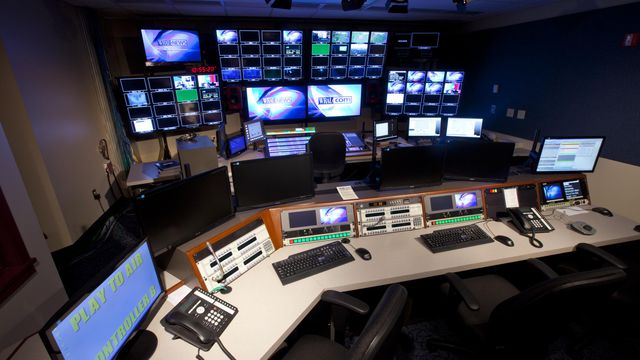WRAL completely rebuilds tech infrastructure
The renovation of the WRAL facility included an all new Master Control capable of switching up to 16 program streams, 3 additional production control rooms, the renovation of one older control room, 3 additional studios, 14 new "craft style" edit suites and a whole new tech core to support it all.
Posted — UpdatedIn 2007, WRAL-TV, the first commercially-licensed HDTV station (1996) based out of Raleigh, North Carolina, began a large-scale renovation of its entire technical facility. The goal was to simplify work flow and day-to-day operations, while developing a production hub for all of its local outlets.
When WRAL first launched the HD plant in 1996, it was as an experimental station. During the next 15 years of development each new piece of equipment was incrementally added to suit the needs of the station as it grew. The facility became a conglomeration of products of various vintages from multiple vendors, which led to a very inefficient and somewhat awkward operation and made for very complex growth as new projects were launched.
The renovation of the WRAL facility included an all new Master Control capable of switching up to 16 program streams, three additional production control rooms, the renovation of one older control room, three additional studios, 14 new “craft style” edit suites and a whole new tech core to support it all. From day one, it was decided to completely eliminate all analog and SD sources. Internally the plant is completely HD with embedded audio, all non-HD programming is converted to HD as it enters the facility and any SD sub-channels are switched at HD and down converted just before transmission.
The project began with a year-long “architectural and core building” re-build. While staying on the air, 25,000 square feet of the station headquarters was demolished and rebuilt from roof to basement. The equipment and power upgrades included all new HVAC, power distribution, UPS and Generator.
The schedule then took a two year break.
In 2011 the project was re-started in earnest.
By Christmas of that year, a new technical core, Master Control, QC/Receive control, a full-sized production control room and two mini control rooms/studios were launched and on the air. Then in 2012 yet another full production control room and two more stations were added to our new Master Control.
By December 2011, there were seven programs streams being generated in MCO with another twelve possible streams being delivered to the web and mobile viewers.
Additionally to tie in the rest of the world, six new 4.5M sattelite dishes were added taking the total to over 20. It was then decided to add a 64x64 RF router to allow for flexibility in the QC/ Receive operations room.
Many separate silos were combined to make the user experience easy. The intention was for everything to be as simple as a press of a button or the click of a mouse. We can now easily use any of the four control rooms to switch a show in any of the six studios, using any of the 15 HD cameras or five HD microwave receive sites, four internet /cell-based receive systems or 20 Sat IRDs to supply programming to any of six stations, 12 web streams or 25 edit suites – all in HD and all at the same time (if needed!).
Copyright 2024 by Capitol Broadcasting Company. All rights reserved. This material may not be published, broadcast, rewritten or redistributed.





